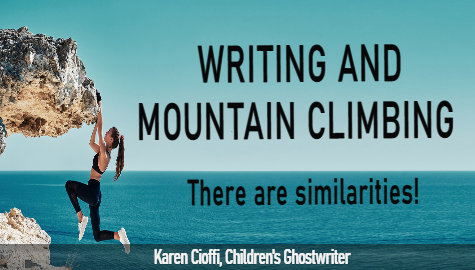
“Because the creation of a novel is akin to a mad scramble up a mountainside layered with loose pebbles, any handhold or solid ground you can find will be a blessing.”
~ Walter Mosley
The article where I got this quote from (link below) deals with Mosley’s writing style, which doesn’t include character sheets or any other form of mapping out your character’s ‘life’ prior to writing your novel.
I love the quote above. As Mosley explained, as you’re writing, your character develops before your eyes. There will be situations or events in the story that you didn’t plan on in the beginning, and your character will need to deal with them. If it’s a new experience, how can you tell how he’ll react?
We’d all like to believe (or write) that our protagonist will act nobly in every new situation, but that doesn’t always happen. It’s the same with people in real life.
You or your character will not know how you’ll react in a situation you never experienced before.
It’s kind of similar to your story itself.
Pantsing Your Way
As you’re writing, the story often takes on a life of itself, as do the characters. It’s kind of amazing when this happens.
This type of writing is by the seat of your pants and is usually called pantsing.
The quote above was referencing this type of writing and why creating structured, highly detailed character sheets isn’t worth it. Stories change as you write them. And if it doesn’t, it will definitely change during edits and rewrites. You may take your characters and storyline in an entirely different direction.
Characters Create Themselves
Letting the characters develop as you write gives you much more freedom over who and what they are or can become.
I’m a pantser because I find it easier to let the story start itself, but whether I’m writing a picture book series, a children’s chapter book, or a middle-grade novel, I do keep character sheets. This is especially important with all series.
I would often find myself looking up the quirks and characteristics I had created for a particular character in earlier books of a series I was writing. Then, inspiration, or necessity or. desperation kicked in, and I created character sheets for each character as I went along. It does save time in the long run.
Simple Outlines Work
I also sometimes create an outline for chapter, middle-grade and young-adult books as I’m going along in a story to give me a guideline. I usually don’t start out with one because I let the story develop the beginning for me.
You might call it the muse kicking in or the story taking charge, but whichever, it’s appreciated.
However, once I pause along the way (it could be in Chapters 4, 5, or 6) and wonder what happens next, I work on where I want the story to go from that point.
I don’t add much detail to the outline; I just create a general direction.
This works for me.
What about you? How do you write?
Source for quote: (Literary Hub article) https://lithub.com/walter-mosley-on-discovering-who-your-books-characters-really-are/

Being a writer, like being any kind of artist who creates something from nothing, is an amazing ability. It’s almost like magic. And, you are in control. You decide what to create. The only limit you have is the cap on your imagination.
Check out my 200+ page ebook (or paperback) that gives you all the basics of HOW TO WRITE A CHILDREN’S FICTION BOOK. It’s newly revised and includes basic information on finding a publisher or agent, as well as marketing your books.
Or you may want to check out my four or eight-week FICTION WRITING FOR CHILDREN eCOURSE

Children’s Writing and Information Dump
6 Book Marketing Tips Sure to Boost Your Author Online Platform
Traditional Book Publishing – Contract to Sales to Career
4 Writing Tips on Using Descriptions
